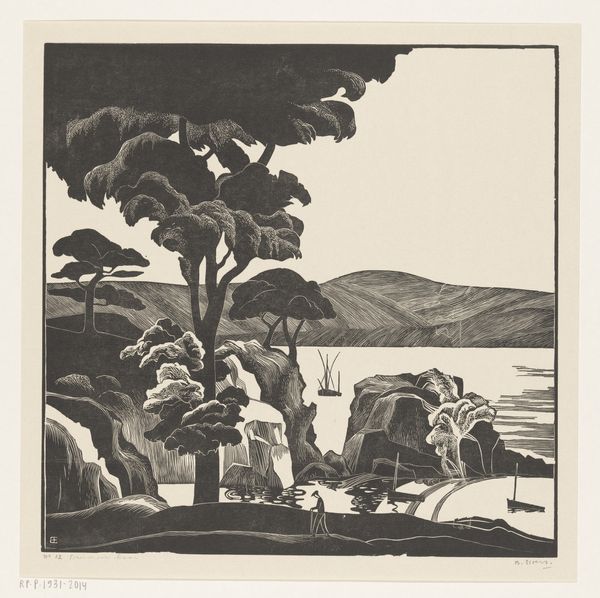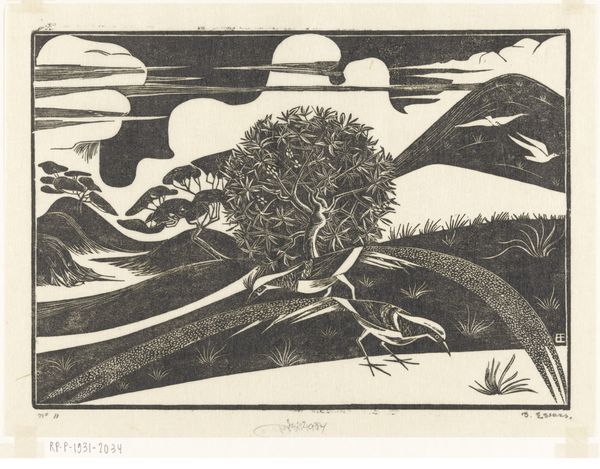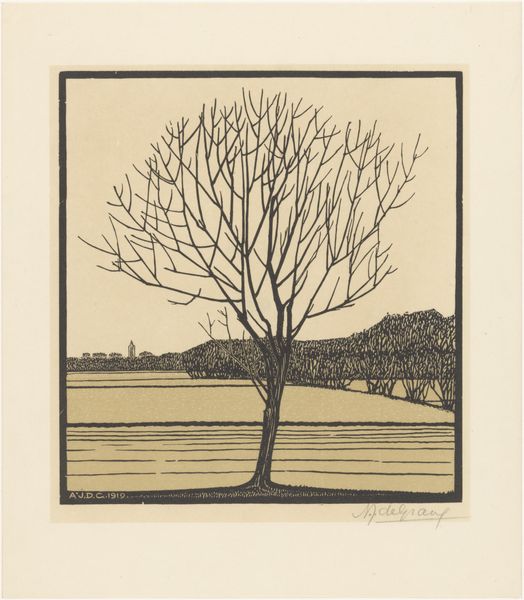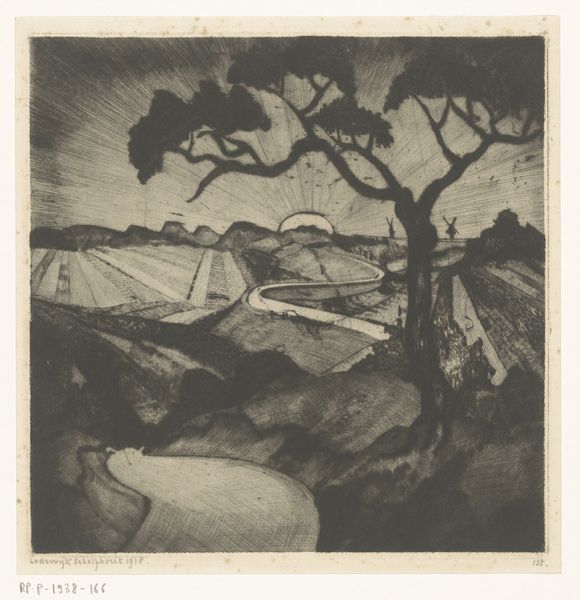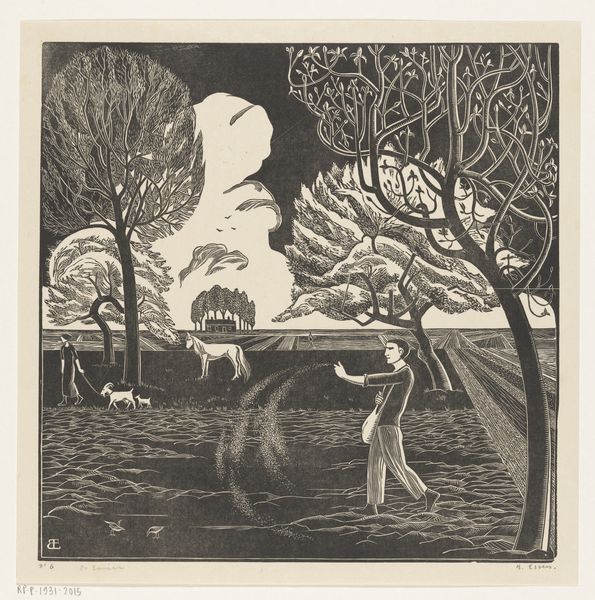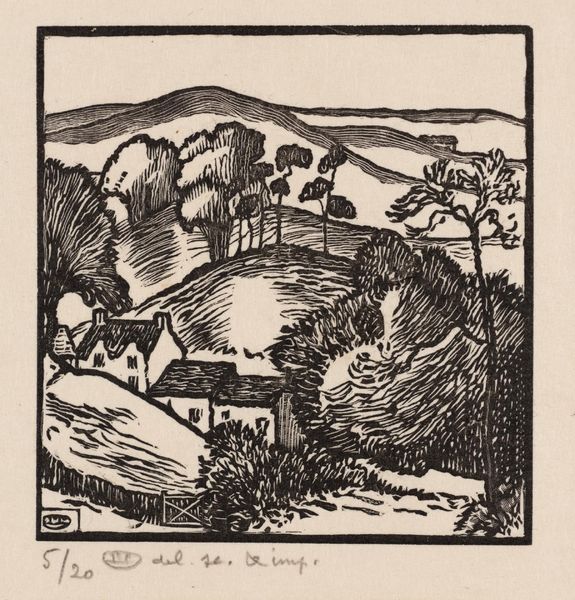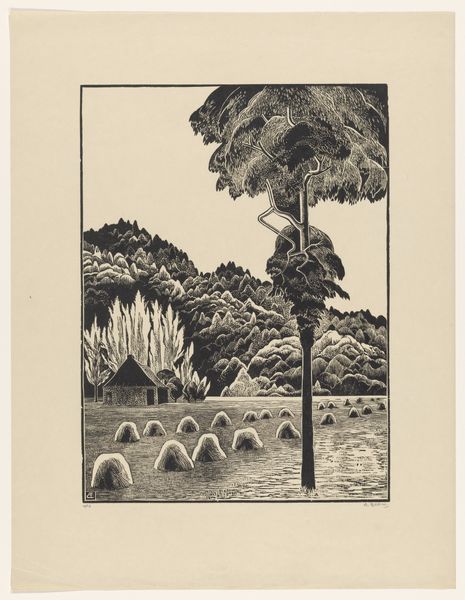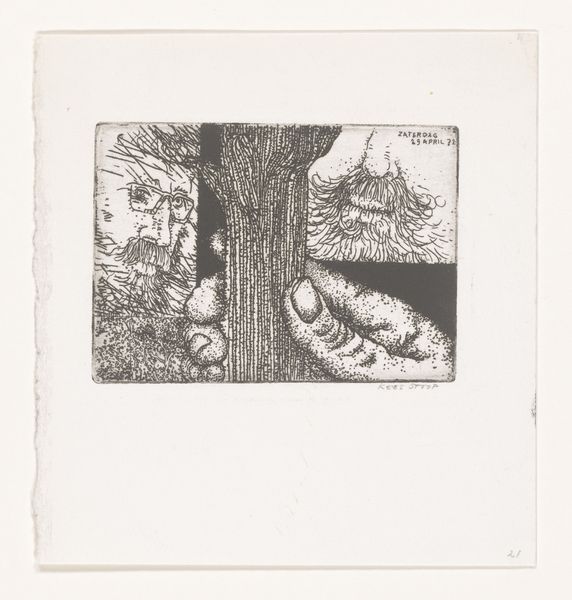
Dimensions: height 364 mm, width 364 mm
Copyright: Rijks Museum: Open Domain
Bernard Essers made this woodcut, "Ploegende Ossen", sometime in the first half of the twentieth century, though when exactly, I can't say. The whole piece is this fascinating dance between black and white. Look at the way he’s carved the tree. See how the branches reach out, holding this solid mass of leaves. The leaves have this gorgeous texture, a kind of organized chaos. It's kind of like how I approach a canvas, starting with an idea, but letting the material lead me. And the birds! They're like a flurry of thoughts taking flight. That contrast between the dark, solid tree and the open sky with the birds creates this great tension, a feeling of constant movement and change. You can almost hear the birds chirping, the wind rustling through the leaves. Like with Max Escher, there’s a joy here in this dance of tone, making black sing and white hum. The meaning is elusive, but it gets right in there, doesn't it?
Comments
No comments
Be the first to comment and join the conversation on the ultimate creative platform.

